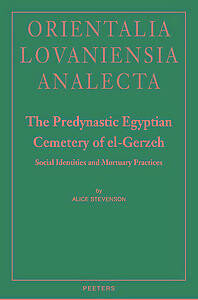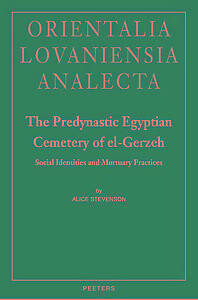
- Afhalen na 1 uur in een winkel met voorraad
- Gratis thuislevering in België vanaf € 30
- Ruim aanbod met 7 miljoen producten
- Afhalen na 1 uur in een winkel met voorraad
- Gratis thuislevering in België vanaf € 30
- Ruim aanbod met 7 miljoen producten
Zoeken
€ 85,00
+ 170 punten
Omschrijving
The cemetery of el-Gerzeh (dated to c. 3600-3350 BC) excavated in 1910-11, seemingly provided the first evidence of Predynastic 'Naqada culture' outside its previously documented social field in Upper Egypt. Moreover, the distinctive character of the assemblage later led Petrie to use the cemetery as the type-site for his 'Gerzean' culture. Despite the apparent significance of the cemetery, the excavation report was brief. Fortunately, the tomb cards from the excavation still exist and almost 300 artefacts from the site have been accessioned into several museums. This book brings together this material for the first time and by utilizing recent archaeological and anthropological theories reassesses its significance. Through the central theme of social identities, together with subsidiary issues concerning scale and the role of funerary practices in ancient communities, the material from Gerzeh is presented and interpreted more fully.
Specificaties
Betrokkenen
- Auteur(s):
- Uitgeverij:
Inhoud
- Aantal bladzijden:
- 351
- Taal:
- Engels
- Reeks:
- Reeksnummer:
- nr. 186
Eigenschappen
- Productcode (EAN):
- 9789042921764
- Verschijningsdatum:
- 17/11/2009
- Uitvoering:
- Hardcover
- Formaat:
- Ongenaaid / garenloos gebonden
- Afmetingen:
- 170 mm x 244 mm
- Gewicht:
- 861 g

Alleen bij Standaard Boekhandel
+ 170 punten op je klantenkaart van Standaard Boekhandel
Beoordelingen
We publiceren alleen reviews die voldoen aan de voorwaarden voor reviews. Bekijk onze voorwaarden voor reviews.











